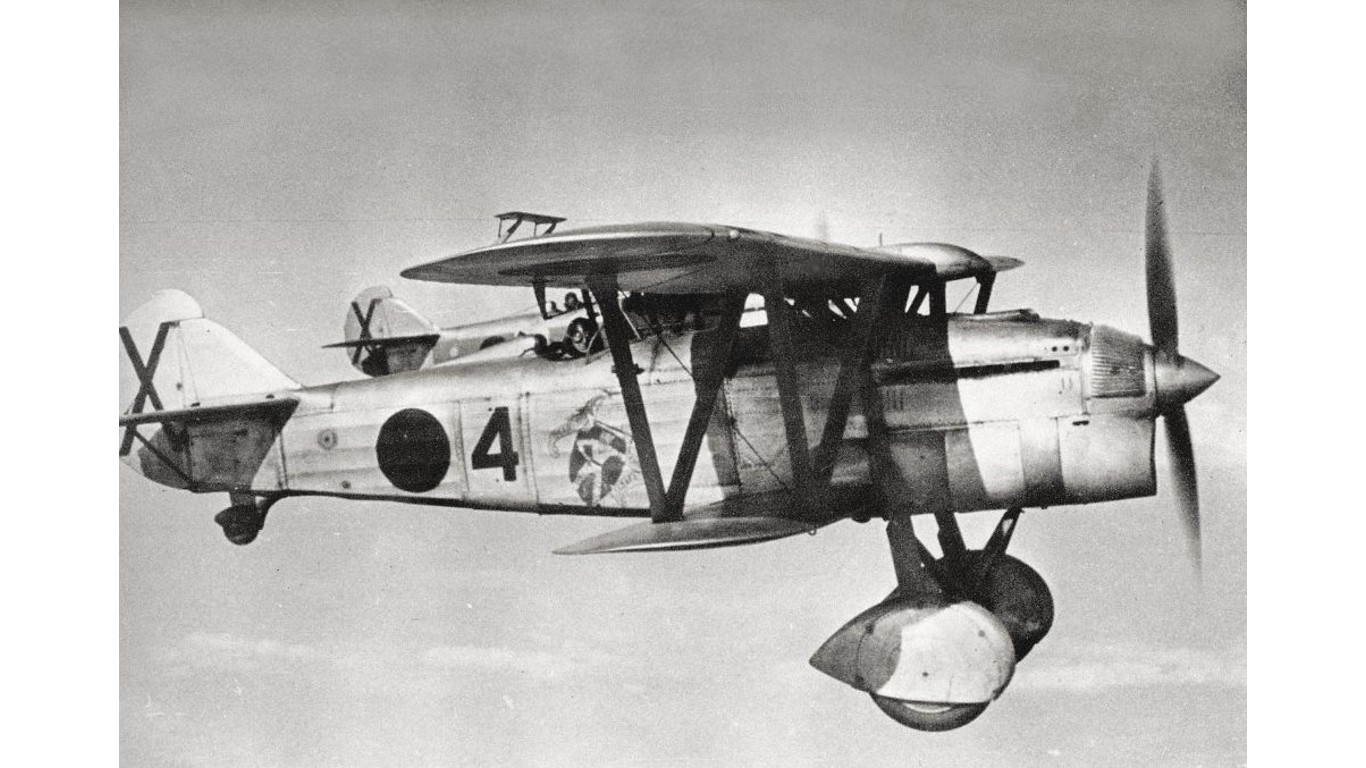
A critical failure but a popular success, the movie “Top Gun” illustrates what seems to be an undeniable truth, fighter pilots are a separate breed. They are exceedingly driven risk-takers, with athletic prowess and quick intelligence. Often, they are Tom Cruise cocky. (If you’re a fan, these are Tom Cruise’s biggest and best movies.)
And they win wars. 24/7 Tempo reviewed various historical sources to determine who were the greatest fighter pilots of all, considering only the top ace for each country in each war. Our ranking is based on the number of “kills” or “victories” – the recorded number of aircraft shot down, and an ace is a pilot who achieves at least five kills in one day.
Because these numbers were sometimes exaggerated by either the pilots or their hero-worshippers, or otherwise were undocumented, we relied exclusively on official estimates from government sources.
Click here to see the greatest aces in aviation history
Of the 25 fighter pilots in this ranking, each had a distinctive style of attack – and often a distinctive look. Manfred von Richthofen, the legendary “Red Baron,” for instance, had the planes in his fighter wing painted in bright colors, making his team famous as “the Flying Circus.”
Some of the aces here returned to the sky undaunted after being shot down, and others managed to avoid getting hit at all in their hundreds of missions. Six of them died in the war, including the Red Baron. Most of the surviving aces could not stay out of the sky after their wars ended. Seven continued their military careers and four flew planes for a living – more, including those that continued to fly after retiring from the military. Tragically, seven out of the 25 died in plane crashes after their war service. (These are 50 of the most decorated war heroes in American history.)
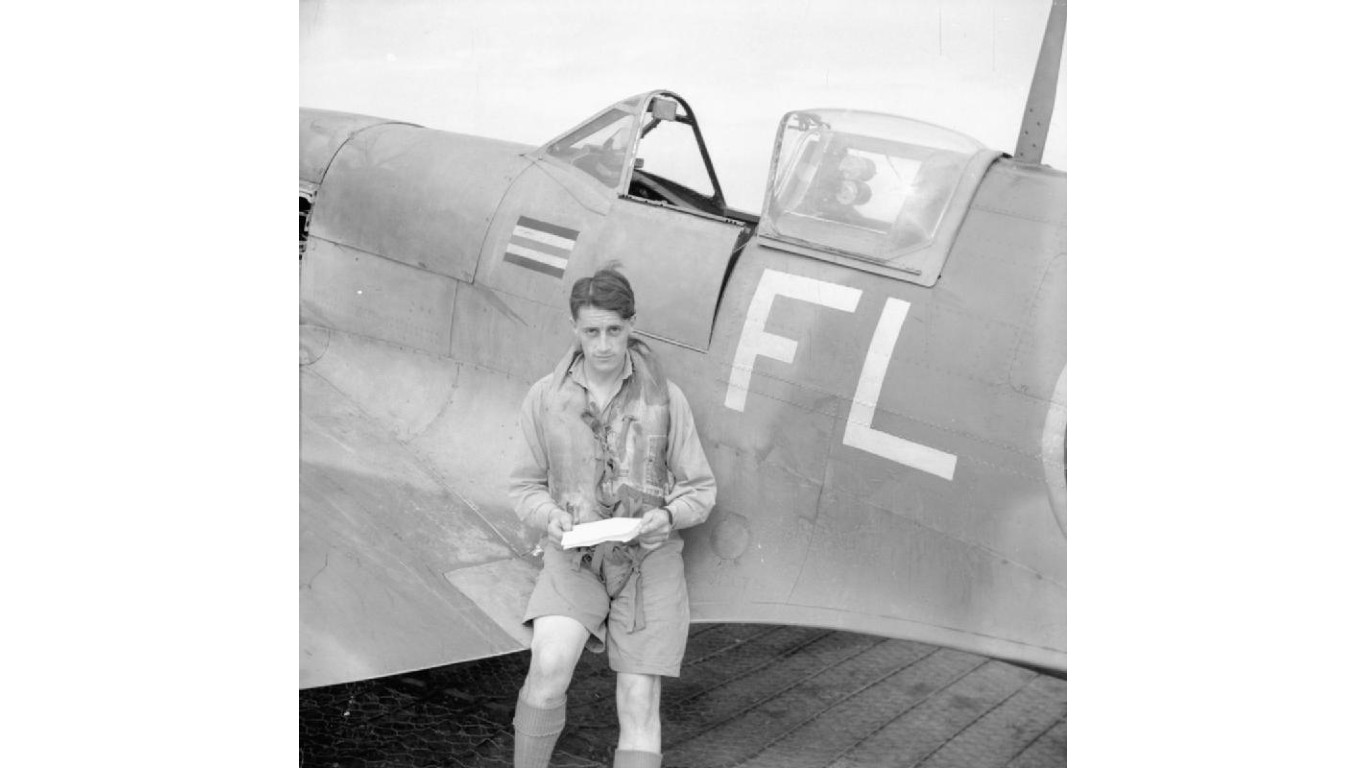
25. Colin Falkland Gray
> Aerial victories: 27 kills
> Primary war: World War II
> Country: New Zealand
A New Zealander, born in Christchurch, Colin Falkland Gray was twice rejected for military service due to poor health, but once enlisted became a fighter pilot and one of the greatest heroes of WWII. Taking one command after another throughout the war, and rising through the ranks, he was finally given a permanent RAF commission. He continued to fly for England until his retirement in 1961 when he returned to New Zealand with his family.
[in-text-ad]

24. Clive Caldwell
> Aerial victories: 28 kills
> Primary war: World War II
> Country: Australia
Born, raised, educated, and trained as a pilot in Australia in the years before WWII, Clive Caldwell joined the war effort as a 29-year-old RAF recruit, and completed his training as a fighter pilot in 1941. He served first in the European theater, earning a reputation for his gunnery and his kills. When Japan entered the war he returned to his homeland to fight for the Royal Australian Air Force, and continued to build his legend, defending the air above Australia, training new pilots, and flying dangerous bombing missions in the Pacific.

23. Dezső Szentgyörgyi
> Aerial victories: 30 kills
> Primary war: World War II
> Country: Hungary
Dezső Szentgyörgyi was the most successful Hungarian fighter pilot in WWII, bringing down both American and Russian aircraft. Ironically, the first plane he shot down was German; its pilot had mistaken him for the enemy and fired on him. Throughout his war career he was never shot down and never crashed a plane, but, as a final irony, he died in a crash three weeks before his retirement as a commercial pilot, losing control of his plane in a storm while attempting to land in Copenhagen.
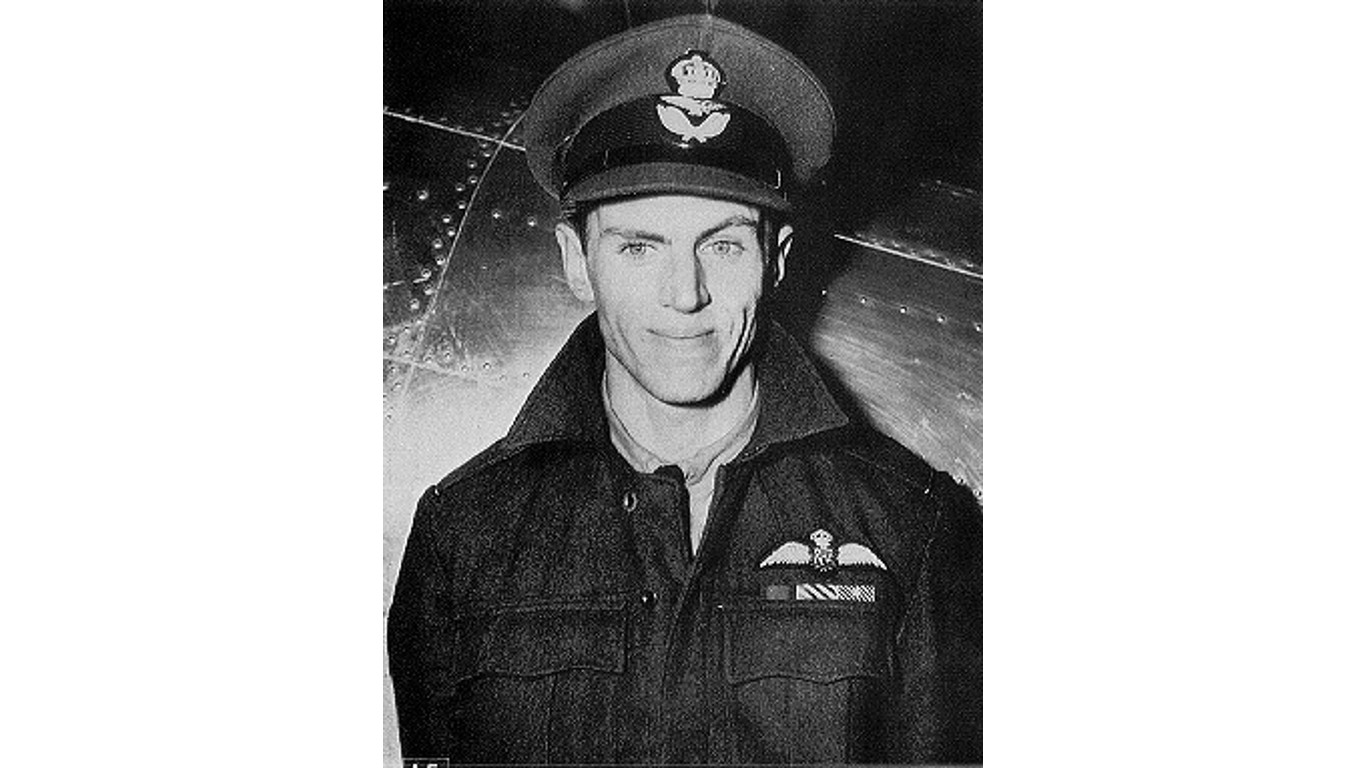
22. George F. “Buzz” Beurling
> Aerial victories: 31 kills
> Primary war: World War II
> Country: Canada
Determined to be a fighter pilot, George Burling quit school at age 15 and focused on flying, finally earning a commercial flying license. His yearning took him to China, where he hoped to fly for the military, but was turned away at the border. He persisted. After being rejected by both the Canadian and Finnish air forces, he was finally accepted into the RAF and became one of the great flying aces of WWII – and a beloved hero in Canada. Before the war was over he was ejected from the RAF for his disregard for military rules.
[in-text-ad-2]

21. Ján Režňák
> Aerial victories: 32 kills
> Primary war: World War II
> Country: Slovak Republic
Ján Režňák lived in German-occupied Slovakia and flew fighter jets for the Slovakian Air Force during WWII. Over the course of two combat missions over Ukraine and Russian he became the most successful Slovakian fighter pilot, credited with 207 missions and 32 kills. Rather than retreat with the Germans at the end of the war, he remained in Slovakia and continued to serve in the military. With the communist takeover in 1948 he was demoted and released but continued flying as a civilian pilot.
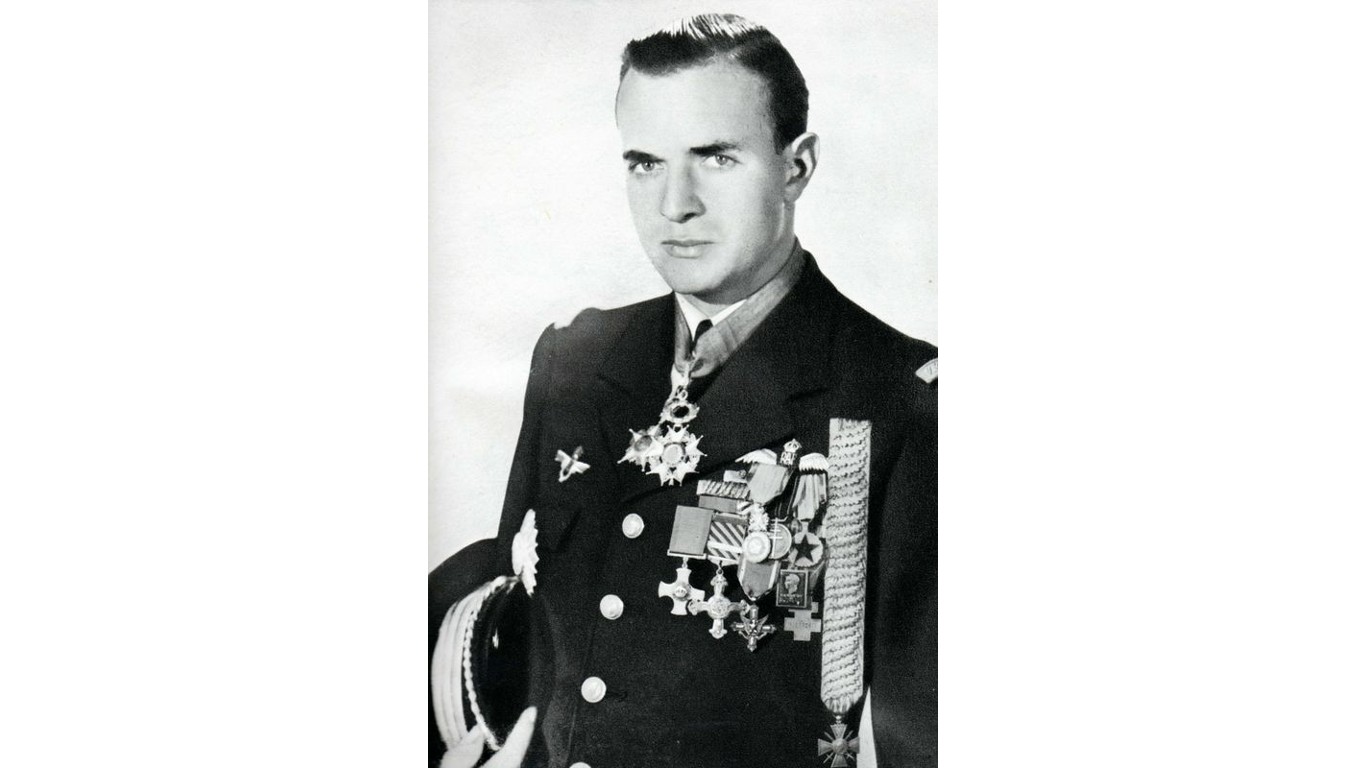
20. Pierre Clostermann
> Aerial victories: 33 kills
> Primary war: World War II
> Country: France
Following Charles de Gaulle’s call for Free French pilots after Germany took over much of France in 1940, Pierre Glostermann went to England to fly for the RAF and became a highly decorated fighter pilot and war hero. A man of many talents, after the war he worked as an engineer and corporate executive, and as a longstanding and prominent representative in the French legislature. He also wrote a popular account of his wartime experiences, “Le grand cirque,” translated into English as “The Big Show,” deemed by a New York Times critic as “a truly remarkable book” in its “gripping” descriptions of aerial combat.
[in-text-ad]

19. Francesco Baracca
> Aerial victories: 34 kills
> Primary war: World War I
> Country: Italy
Joining the Royal Piedmont Calvary in 1907, Francesco Baracca rose rapidly in the ranks and eventually was trained as a pilot in advance of WWI, with Italy a neutral country as the war began. He then fought on the Italian front as Italy’s most successful ace, but was shot down in 1918. He is believed to have killed himself rather than be taken prisoner. The prancing horse he painted on his warplane has been the distinctive logo for Ferrari racing cars since 1923.
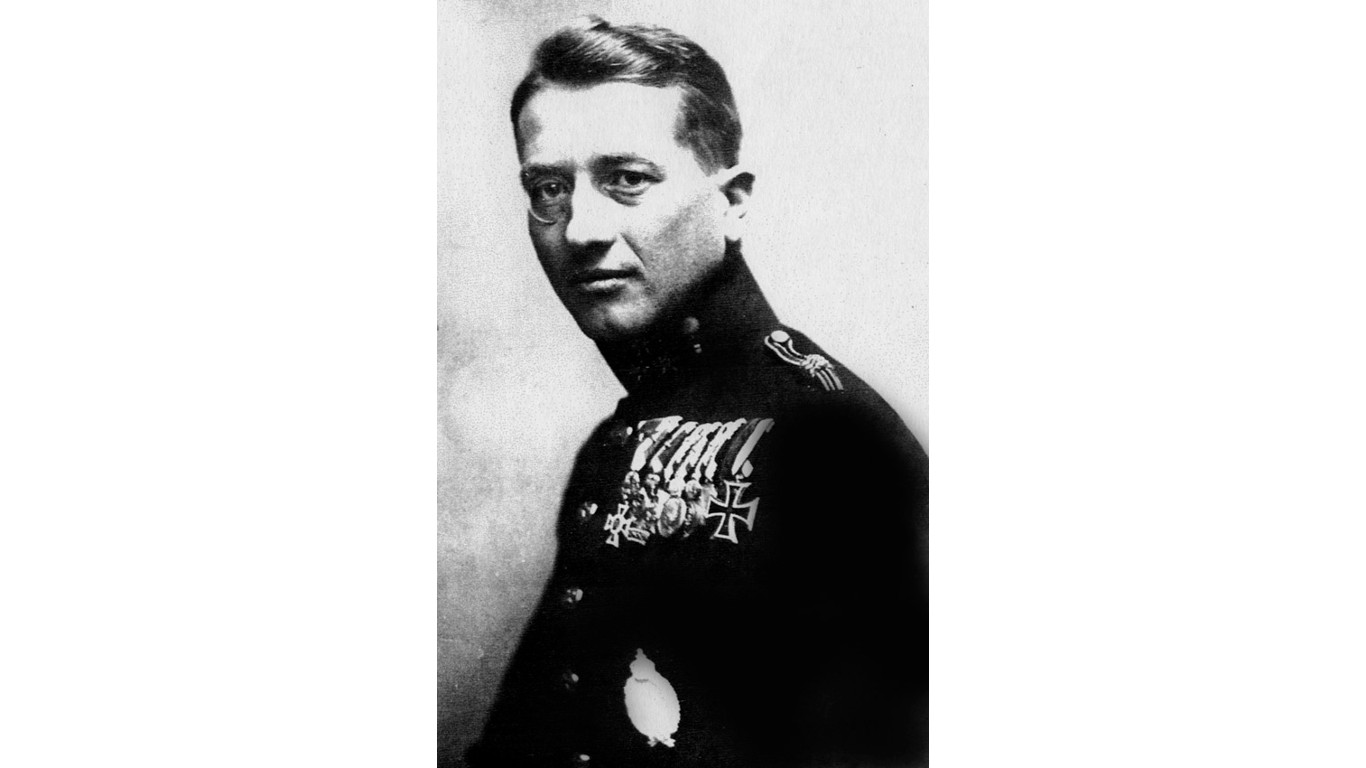
18. Godwin von Brumowski
> Aerial victories: 35 kills
> Primary war: World War I
> Country: Austria-Hungary
A distinguished army combatant on the Russian front, Godwin von Brumowski was transferred to the air service, first as an observer and then as a pilot in 1916. The next year he took command of the first Austria-Hungarian squadron, choosing as his insignia a white skull on a black background. Failing as a farmer after the war, he started a flight school, but eventually died after a crash in Amsterdam in 1936.

17. Willy Coppens
> Aerial victories: 37 kills
> Primary war: World War I
> Country: Belgium
While serving in Belgium’s military, Willy Coppens took flying lessons at his own expense and took to the skies as a war pilot, achieving more kills than any other fighter pilot in his country’s Compagnie des Aviateurs. His specialty was shooting down enemy observation balloons, a dangerous enterprise; his balloon “kills” constituted 35 of his 37 take-downs. He was shot just before Armistice, crashing his plane and receiving a wound that required his leg to be amputated. His peacetime work was as a military attaché to France, Italy, Britain and Switzerland, and in writing his memoir, “Days on the Wing.”
[in-text-ad-2]

16. James Edgar “Johnnie” Johnson
> Aerial victories: 38 kills
> Primary war: World War II
> Country: United Kingdom
Trained as a civil engineer and initially rejected by the RAF, James Edgar Johnson was able to join the volunteer RAF and train on weekends to become a pilot. In 1939 he was called up for active duty and became the second most successful fighter pilot in the RAF, surpassed only by South African Ace, “Pat” Pattle. He was highly decorated for his 515 sorties, scoring 38 kills and avoiding enemy fire except for one hit over France. Johnson continued his military career in the RAF, taking a break to fight in Korea on behalf of the U.S.
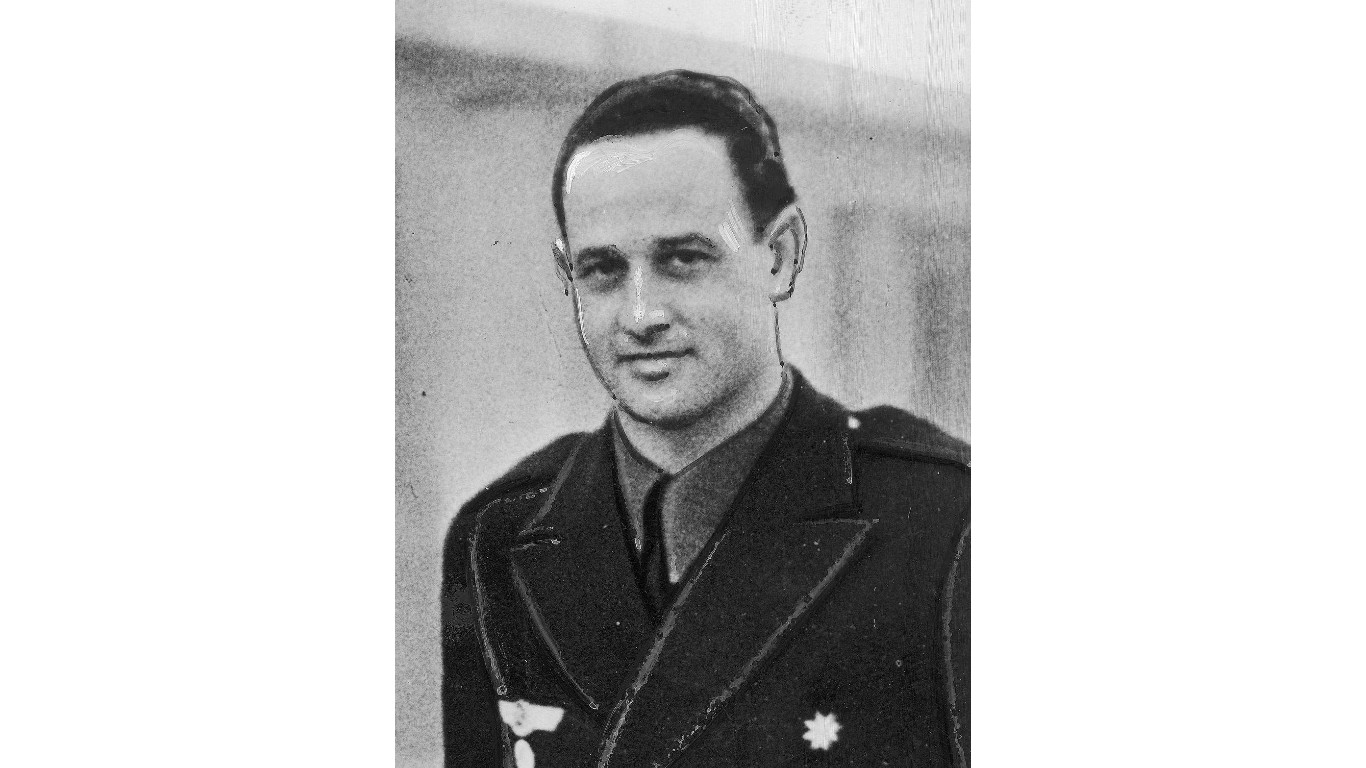
15. Joaquín García Morato
> Aerial victories: 40 kills
> Primary war: Spanish Civil War
> Country: Spain
Credited with 40 wins against Republican aircraft in the Spanish Civil War, Joaquín García Morato was the leading Nationalist fighter pilot. In his 1,000 operational hours in the sky, Morato was only shot down once, by a novice pilot who was also his own trainee. He did not have the opportunity to improve on his record in the Second World War, having died performing aerobatics for a film crew in1939.
[in-text-ad]
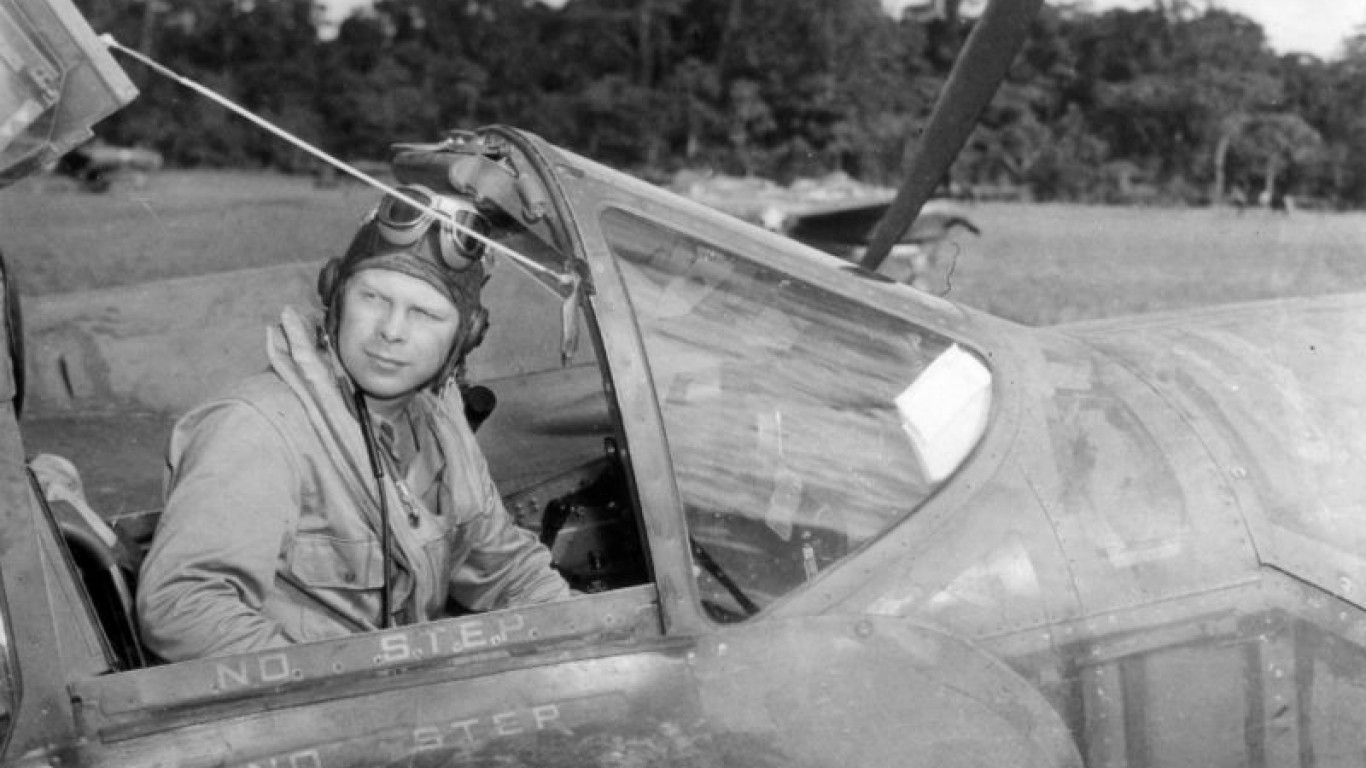
14. Richard I. Bong
> Aerial victories: 40 kills
> Primary war: World War II
> Country: United States
While Canada’s WWII ace “Buzz” Beurling got booted from the RAF for his aerial antics, Richard Bong’s daring stunts caught the attention of a general, who lifted him from his job as instructor in the reserves to a commission as a fighter pilot in the U.S. Army Air Force. He fought in the Pacific and earned the title of “ace of aces,” scoring the highest number of kills of any American while also excelling at rescue operations. Released from the military before the war was over, he took a job with Lockheed as a test pilot; he was killed shortly thereafter, flying a new aircraft called the P-80A Shooting Star Jet Fighter.

13. Marmaduke “Pat” Pattle
> Aerial victories: 41 kills
> Primary war: World War II
> Country: South Africa
Born in South Africa but rejected by the South African Air Force in the mid-1930s, “Pat”
Pattle traveled to England where he was trained as a pilot by the RAF. He was stationed in Egypt when the war broke out and was sent to fight the Italian Air Force when Italy joined the Axis powers. From there he was sent to Greece where he grew his reputation as an “ace in a day” pilot, scoring five kills in a single day on three occasions, and six on another. The day after his six victories he flew against orders and fought his last dogfight against German Messerschmitts before he crashed into the sea and was killed.

12. Mato Dukovac
> Aerial victories: 44 kills
> Primary war: World War II
> Country: Croatia
Mato Dukovac, considered the most successful Croatian war pilot, fought for the Axis powers on the Russian front. Not long after receiving a gold German Cross, personally awarded by Field Marshal Wolfram von Richtofen, he defected to Russia, where he joined the Russian Air Force, serving as a flight instructor in Russia and then Serbia. To avoid arrest for his defection, he flew to Italy and surrendered. He later fought for Syria in the Arab-Israeli war, before settling in Canada.
[in-text-ad-2]

11. Robert A. Little
> Aerial victories: 47 kills
> Primary war: World War I
> Country: Australia
Australian greatest flying Ace, Robert Little, took flying lessons at his own expense before joining England’s Royal Naval Air Force, a WWI predecessor to the RAF. Fighting on the Western front he was decorated by both the British and the French after 38 kills. He returned to the sky with nine more victories before being shot down, dead at age 22.
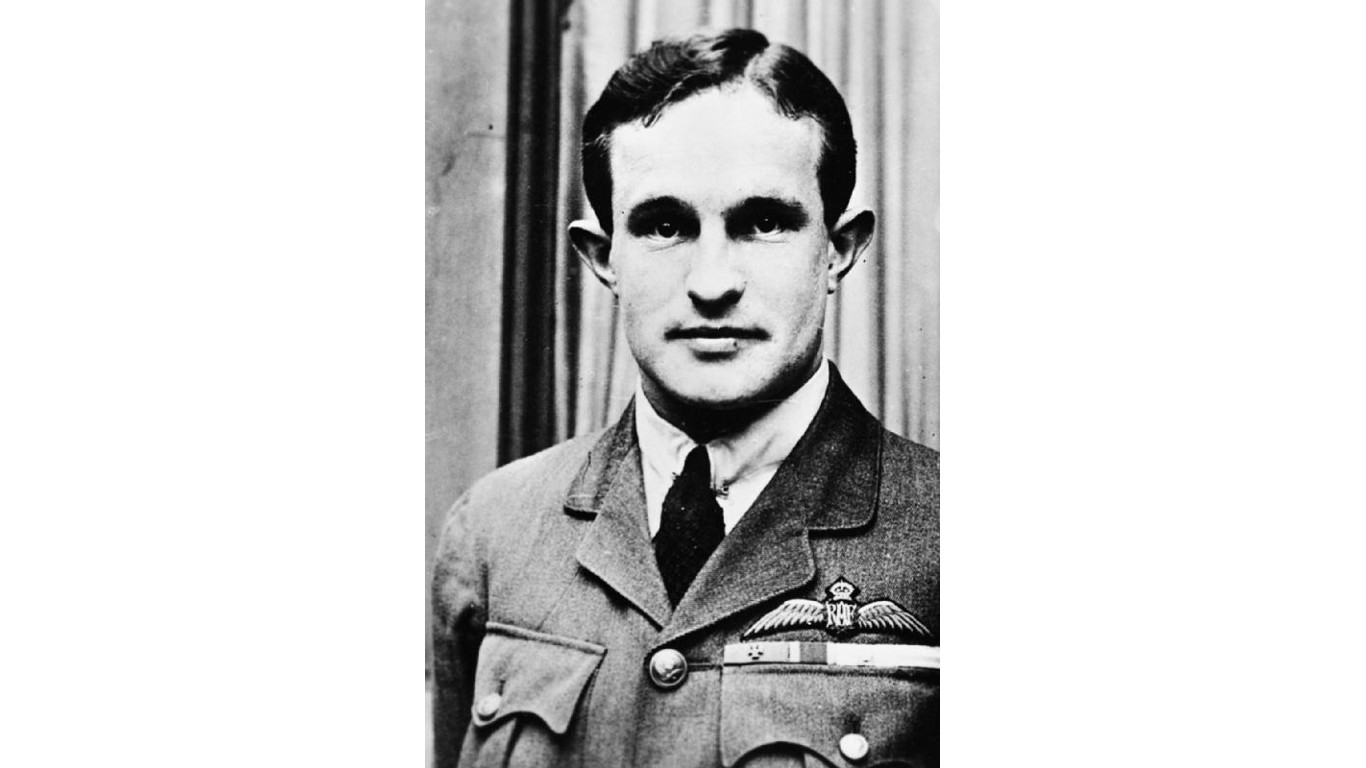
10. Andrew Beauchamp-Proctor
> Aerial victories: 54 kills
> Primary war: World War I
> Country: South Africa
Although he is remembered as the most successful South African fighter pilot in WWI, commissioned with England’s Royal Flying Corps, the diminutive Andrew Beauchamp (he stood five-foot-two) was not considered a particularly capable pilot, possibly hampered by his height. He crashed three planes before his first kill. But he was a talented marksman, noted for taking down enemy observation balloons, and received a Distinguished Service Order and Victoria Cross for his gallantry. He died in a crash while practicing for an RAF air show three years after the war’s end.
[in-text-ad]
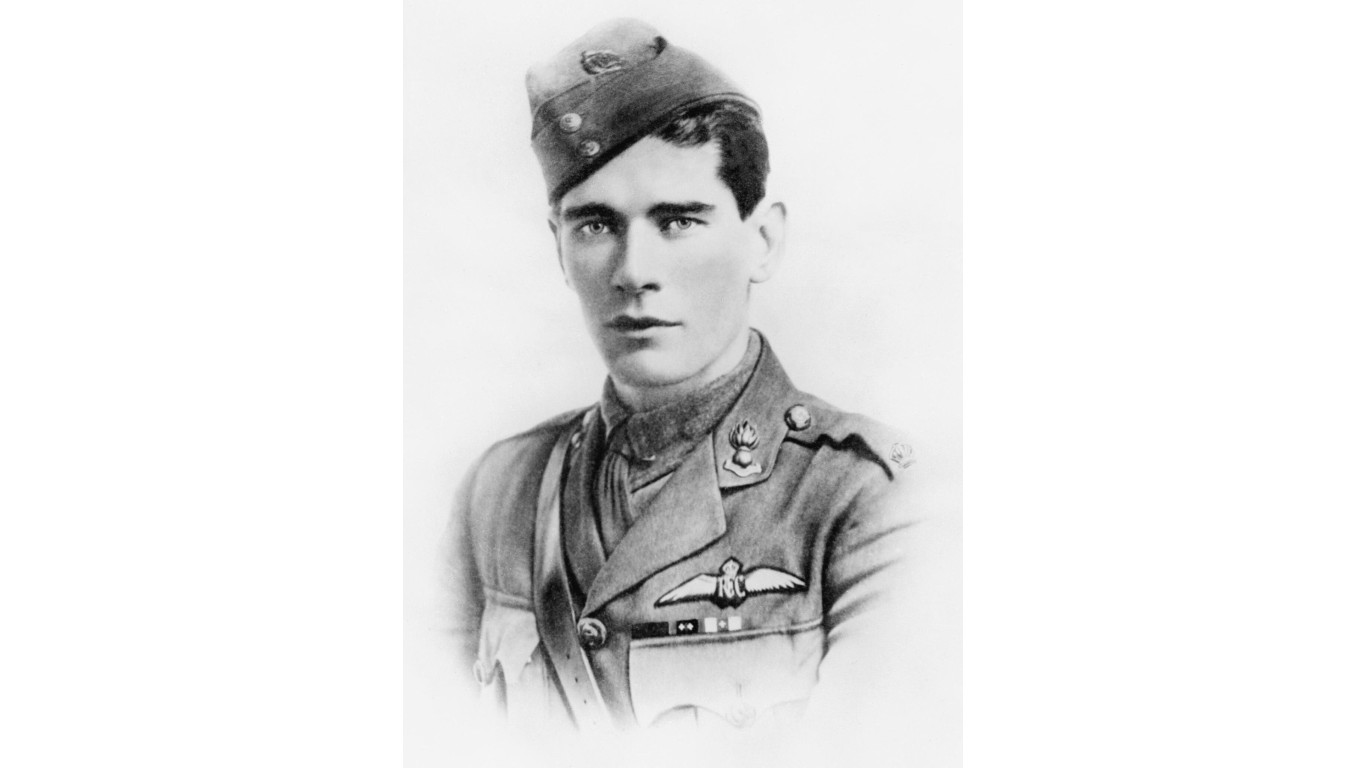
9. Edward Mannock
> Aerial victories: 61 kills
> Primary war: World War I
> Country: United Kingdom
Unlike many British men who came from privilege to seek glory in a war plane, Edward Mannock came from poverty. At the start of the war he was in Turkey looking for work and was thrown in jail with other Brits. When he managed to return to England, he joined the Royal Flying Corps and quickly became a war hero. A natural leader, he set up kills for pilots in his command to boost morale, but still became the most successful British pilot in WWI, believed to have shot down 61 enemy planes. He was killed in action, his plane losing a wing under German fire and bursting into flames before Mannock could save himself.
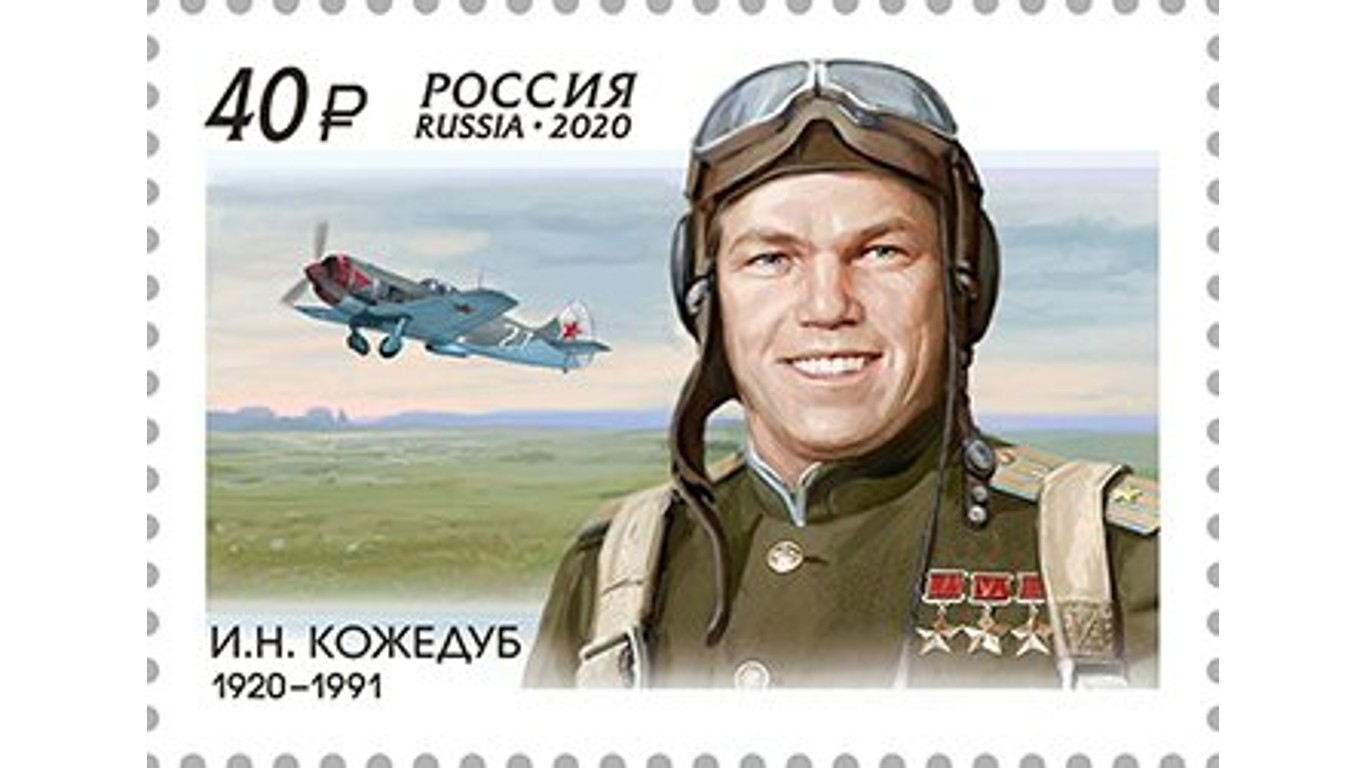
8. Ivan Kozhedub
> Aerial victories: 66 kills
> Primary war: World War II
> Country: Soviet Union
While in technical school, and concerned by the Japanese incursions in Russia, Ivan Kozhedub learned to fly at a local flight club, finally joining the Red Army in 1940 where he was given military flight training. He taught flying himself for three years before he was sent to the front, where he earned his status as the Allied forces greatest ace, and was rewarded with dozens of honors. He remained in the military after the war ended, receiving leadership training and holding ever more prestigious ranks and honors. He retired as Russian’s Marshal of Aviation.
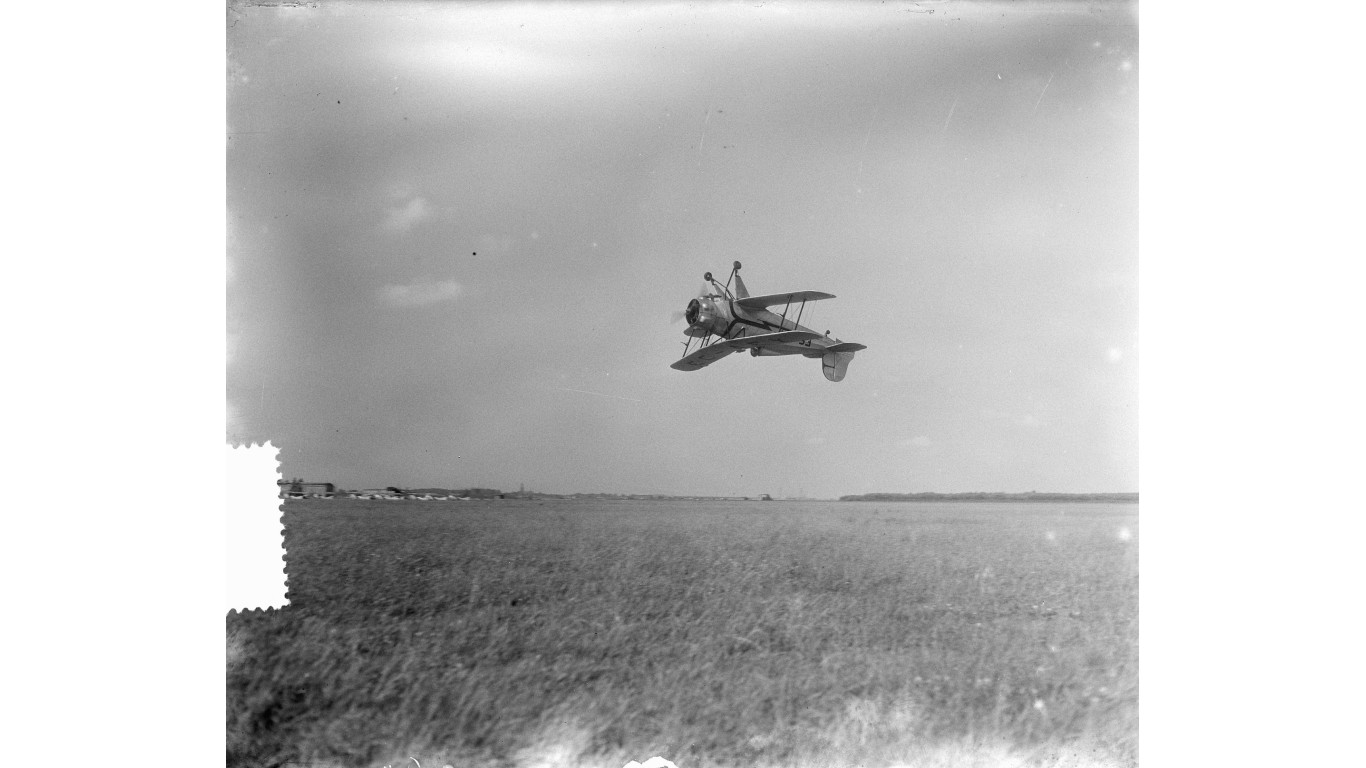
7. Constantin Cantacuzino
> Aerial victories: 69 kills
> Primary war: World War II
> Country: Romania
Born into wealth and a prominent Romanian family, Constantin Cantacuzino was a talented and fearless athlete, heading up his country’s hockey team, and also a motorbike competitor. He eventually took up flying, and, after winning a national aerobatics competition, became a professional pilot, and finally a fighter pilot for the Romanian Army, flying missions over Russia. Having performed with huge success against the Allied forces, he joined them when Romania left the Axis in 1943, and was instrumental in protecting the capital from the Germans. With the communist takeover after the war, Cantacuzino lost his status and wealth and fled the country, finally settling in Spain.
[in-text-ad-2]
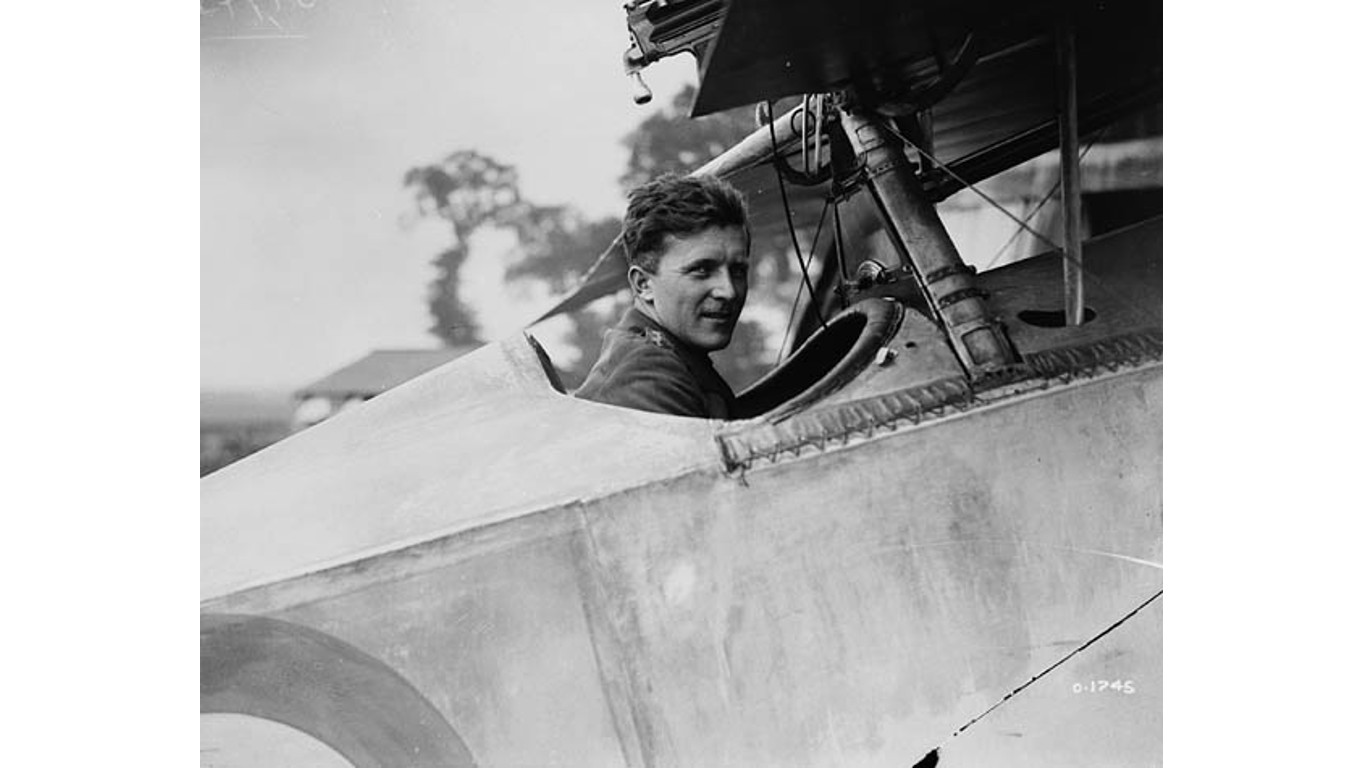
6. Billy Bishop
> Aerial victories: 72 kills
> Primary war: World War I
> Country: Canada
At the age of 20, Billy Bishop left Canada for Englland in 1914 to join the war effort, having spent the previous three years as a student in the Canadian Royal Military College. Trained as a pilot, he served first as an observer before finding his calling as a fighter pilot. Building an impressive record of victories, he became first a captain and then a major in the same year, earning Britain’s highest military honors. He was famous for his solo attacks, so his hit record is not fully documented and is in some dispute, though his valor is well-proven.
5. René Fonck
> Aerial victories: 75 kills
> Primary war: World War I
> Country: France
A Commander of the French Legion of Honour, René Ronck was the greatest ace of the Allied forces of WWI. Entering the war in the army, he switched to the air force and began flying missions in 2017. He had something to prove after his first kill, which was recorded as unconfirmed, and had an intense desire to prove his capabilities. By the end of his service he had beat Canadian Billy Bishop’s record by three victories, with his plane suffering a hit from only one bullet throughout the war.
[in-text-ad]
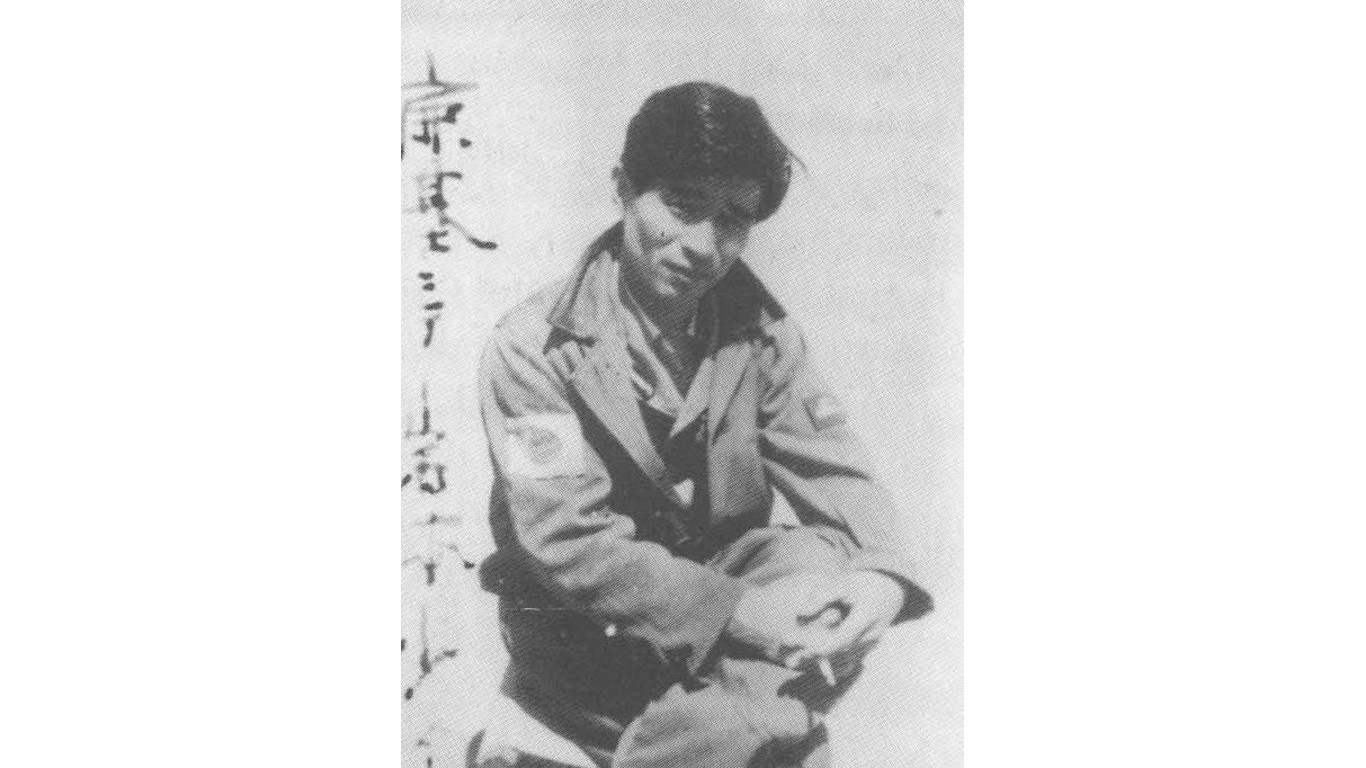
4. Tetsuzō Iwamoto
> Aerial victories: 80 kills
> Primary war: World War II
> Country: Japan
Beginning his military career at age 18, Tetsuzō Iwamoto was a pilot two years later, and two years after that, in 1938, flew his first mission for the Imperial Japanese Navy Air Service over China, where he ultimately scored 14 victories. He flew fighter planes in the Pacific throughout WWII and is credited with 80 victories, though in the diary found after his death, he claimed to have destroyed 202 Allied aircraft. His last military work was training kamikaze fighters. He fared badly during the Allied occupation after the war, unable to get work, and suffered depression and illness, dying in 1955.

3. Manfred von Richthofen
> Aerial victories: 80 kills
> Primary war: World War I
> Country: German Empire
Manfred von Richtofen, known as the Red Baron, began WWI in the German Calvary and moved on to the infantry before finally joining the Imperial Air Service and, the next year, becoming a pilot and on his way to becoming a war legend. He was the most successful ace of the First World War. After a record 80 kills, he was finally shot down over the Somme River in France shortly before the war’s end, with a bullet in his head. It has been a matter of debate, as to who was responsible for his death, as is the question of whether the fatal bullet came from the ground or machine gun fire from other pilots involved in the Baron’s last dogfight.

2. Ilmari Juutilainen
> Aerial victories: 94 kills
> Primary war: World War II
> Country: Finland
Finland entered WWII in defiance of Russian aggression, having first fought in the earlier Winter War, in which Russia invaded Finland in an attempt to annex Finnish territory. As with the current war in Ukraine, Russia gained about 10% of Finland’s land mass, but after many humiliating defeats and at great cost. Finnish Air Force ace Ilmari Juutilainen gained valuable experience and a taste for revenge in the Winter War, and continued his fight against the Russians in WWII, becoming the most victorious non-German fighter pilot in history. Juutilainen survived the war, having never been hit and never losing a wingman.
[in-text-ad-2]
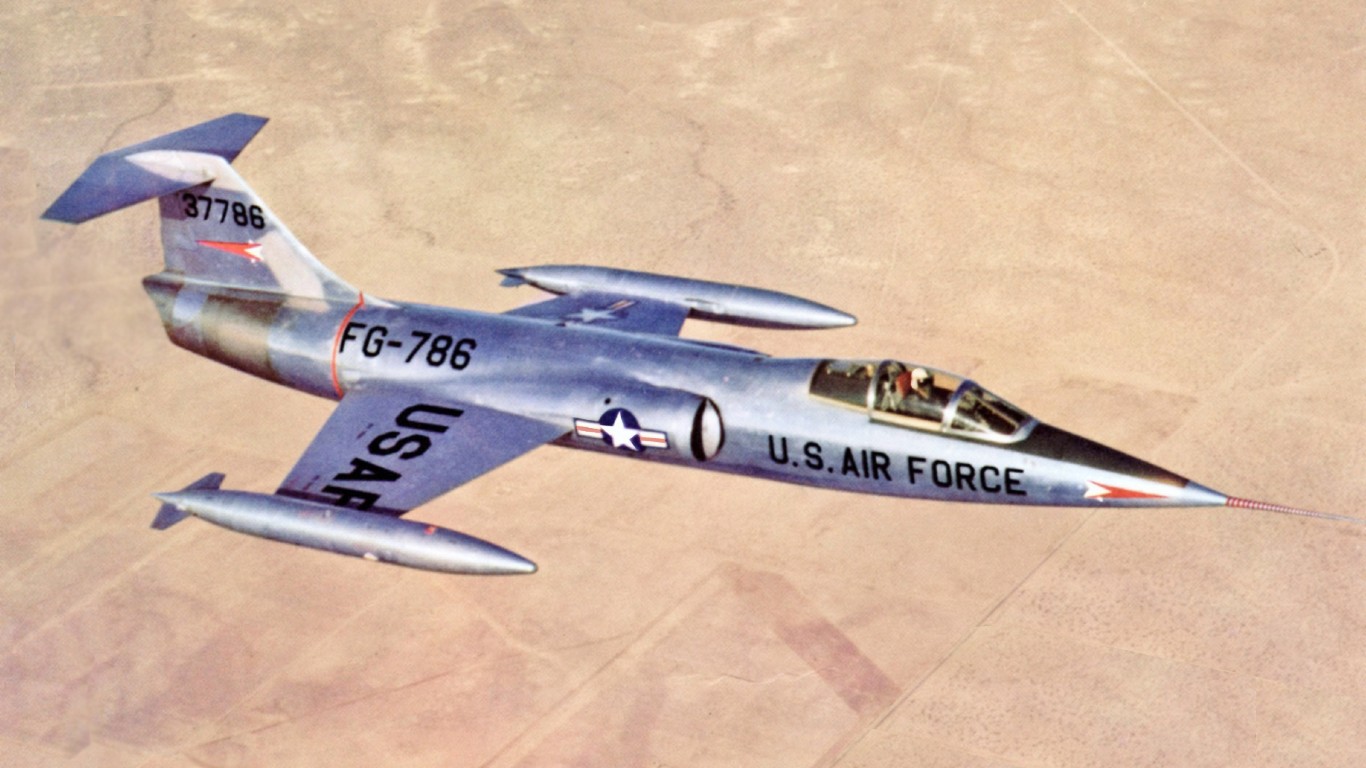
1. Erich Hartmann
> Aerial victories: 352 kills
> Primary war: World War II
> Country: Germany
German ace Erich Hartmann was undeniably the most successful fighter pilot in history, taking down more than three times the number of aircraft as his closest competitors: 352 victories in 825 missions. He was forced down on 14 occasions and captured in one incident, but he managed to escape and return to duty. At the end of the war Hartmann surrendered to the U.S. and was turned over to the Russians, who imprisoned him, sentencing him to hard labor. After ten years he returned to Germany, where he continued in active duty until 1970.
Travel Cards Are Getting Too Good To Ignore (sponsored)
Credit card companies are pulling out all the stops, with the issuers are offering insane travel rewards and perks.
We’re talking huge sign-up bonuses, points on every purchase, and benefits like lounge access, travel credits, and free hotel nights. For travelers, these rewards can add up to thousands of dollars in flights, upgrades, and luxury experiences every year.
It’s like getting paid to travel — and it’s available to qualified borrowers who know where to look.
We’ve rounded up some of the best travel credit cards on the market. Click here to see the list. Don’t miss these offers — they won’t be this good forever.
Thank you for reading! Have some feedback for us?
Contact the 24/7 Wall St. editorial team.
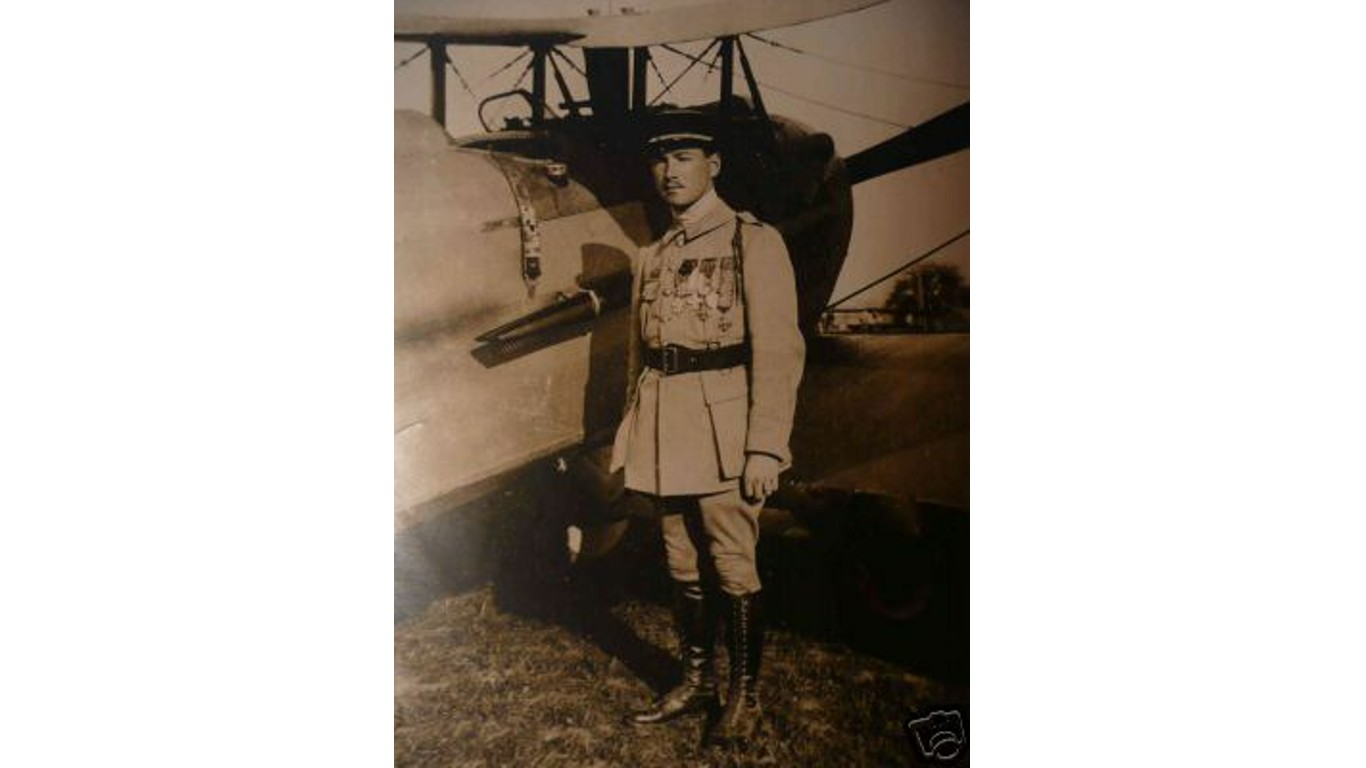
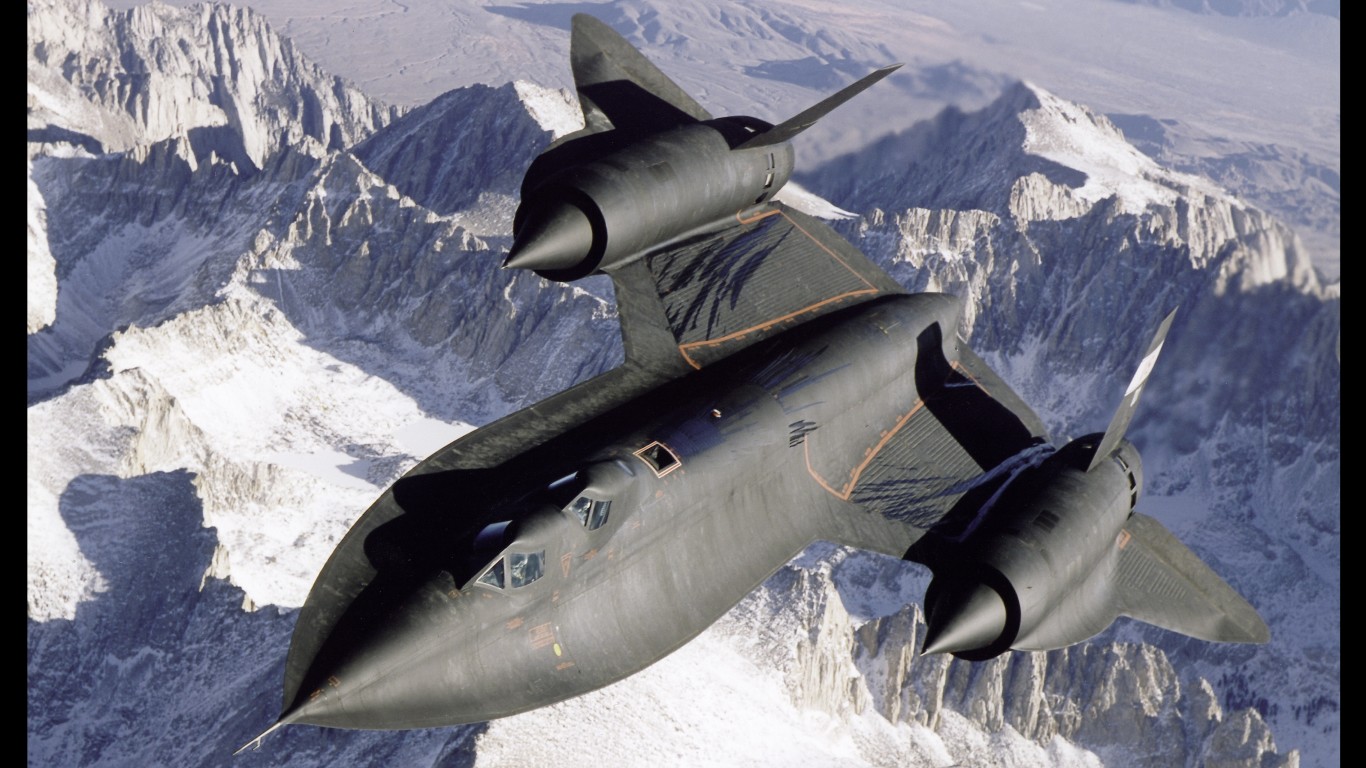 24/7 Wall St.
24/7 Wall St.